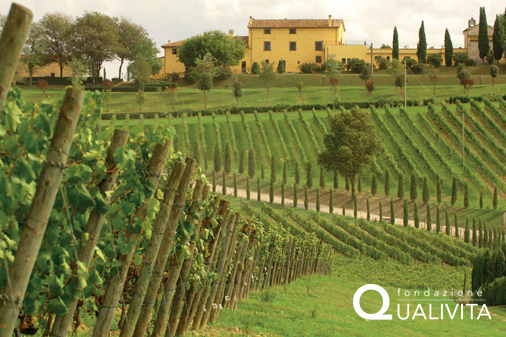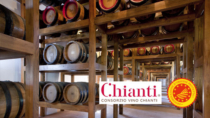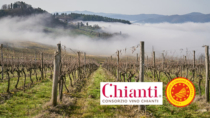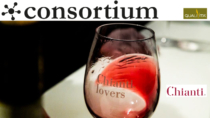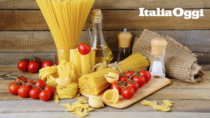Description
The Chianti PDO is reserved exclusively for Red wine.
Production Area
The production area of Chianti PDO is within the territory of numerous municipalities in the provinces of Arezzo, Florence, Prato, Pisa, Pistoia and Siena, in the Tuscany region.
Description of product typologies
Chianti PDO is intense ruby red, tending towards garnet red with ageing; red fruity fragrances alternate with earthiness on the nose, at times robust, with light hints of violet; it is fresh and slightly sapid on the palate, with good, yet not excessive structure, becoming smooth and velvety over time. It can display Superiore and Riserva on the label, the latter only if the wine has undergone a minimum ageing period of 2 years, commencing January 1st of the year following that in which the grapes were produced. For the production of Chianti PDO wines, the practice of “governo all’uso toscano” is allowed, a Tuscan vinification technique that consists of a slow secondary fermentation of the wine immediately after the first fermentation, together with the must of Sangiovese or Canaiolo grapes dried on racks. The vinification, ageing, bottling and maturation processes must be carried out within the delimited production area. These operations may also take place within the entire administrative territory of the provinces of Arezzo, Florence, Pisa, Pistoia, Prato and Siena, as well as in the bordering provinces of Grosseto, Livorno and Lucca.
Geographical and sub-area specifications
The Chianti PDO can be accompanied by seven geographical sub-areas: Chianti PDO Colli Aretini, produced in the Province of Arezzo; Chianti PDO Colli Fiorentini, Chianti PDO Montespertoli and Chianti PDO Rùfina, produced in the Province of Florence; Chianti PDO Colli Senesi, produced in the Province of Siena; Chianti PDO Colline Pisane produced in the Province of Pisa; and Chianti PDO Montalbano produced in the provinces of Pistoia, Prato and Florence. The characteristics of each of the seven sub-designation’s colour, fragrance and taste are the same as those of Chianti PDO without a geographical specification. The composition of the Chianti PDO Colline Senesi sub-area is a minimum of 75% Sangiovese, alone or with the addition of grapes from other varieties suitable for cultivation in the Tuscany region, max. 25%; white grape varieties, either individually or combined, cannot exceed 10%; the Cabernet Franc and Cabernet Sauvignon grape varieties, individually or combined, cannot exceed 10%. Geographical specifications added to the Chianti PDO designation is permitted exclusively on the labels of wines produced in the relative sub-areas and on the condition that the wine is produced from grapes that are harvested and vinified within the respective production areas, subject to any exceptions. Chianti PDO Rùfina and Chianti PDO Colli Fiorentini wines can display Riserva on the label if they have undergone a minimum ageing period of 2 years, 6 months of which must be in wooden barrels; for Chianti PDO Colli Senesi Riserva wine the period in wooden barrels must be of at least 8 months, with at a further 4 months maturing in the bottle. The ageing period for Riserva wines commences January 1st of the year following that in which the grapes were produced.
Additional specifications
The Chianti PDO designation can be followed by the specification Vigna (Vineyard) with the relative toponym if it is registered in the specific regional list. The labels of Chianti PDO wines produced with the traditional “governo all’uso Toscano” technique can also display the specification “Governato, or similar authorized terms.




